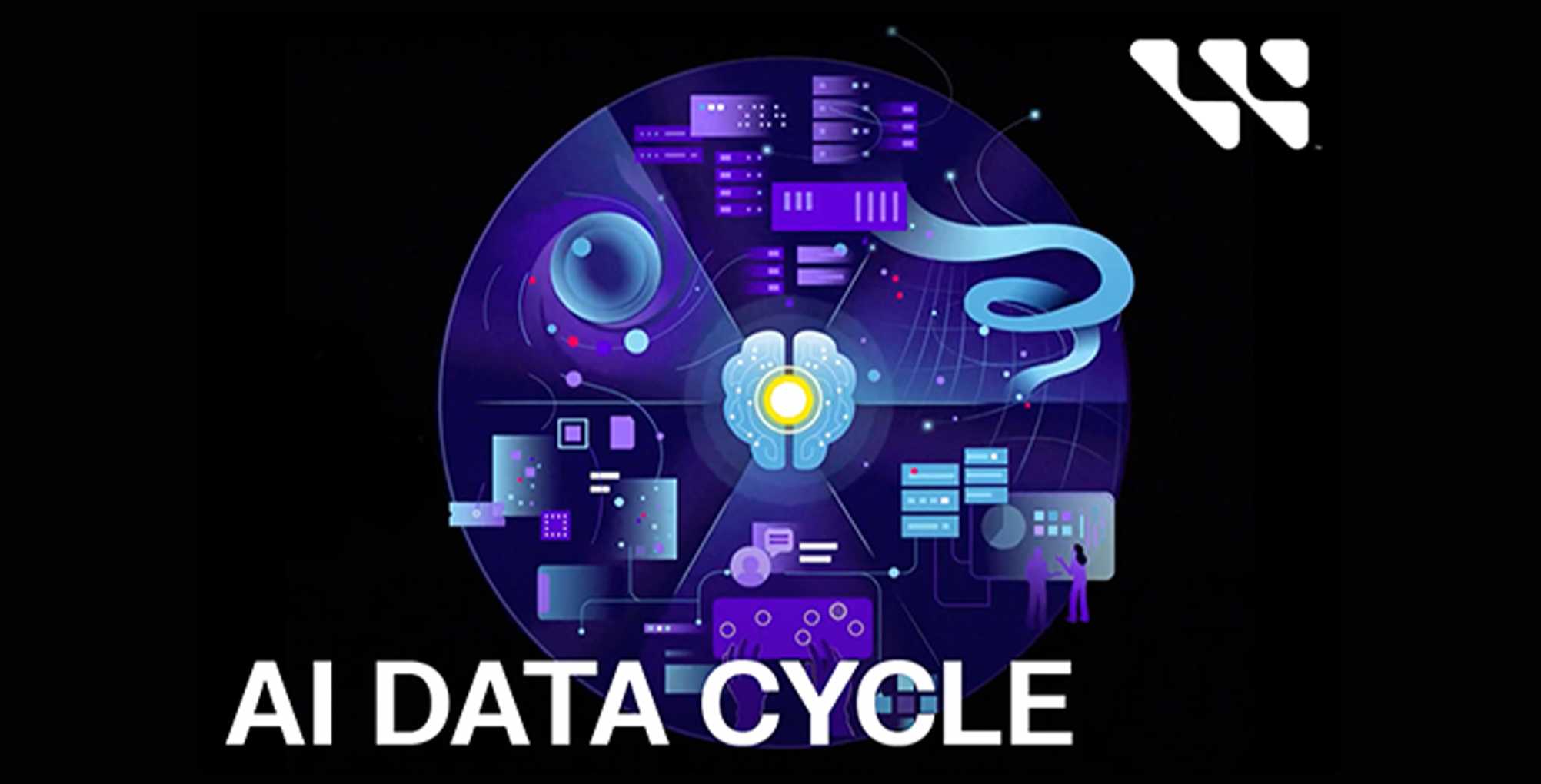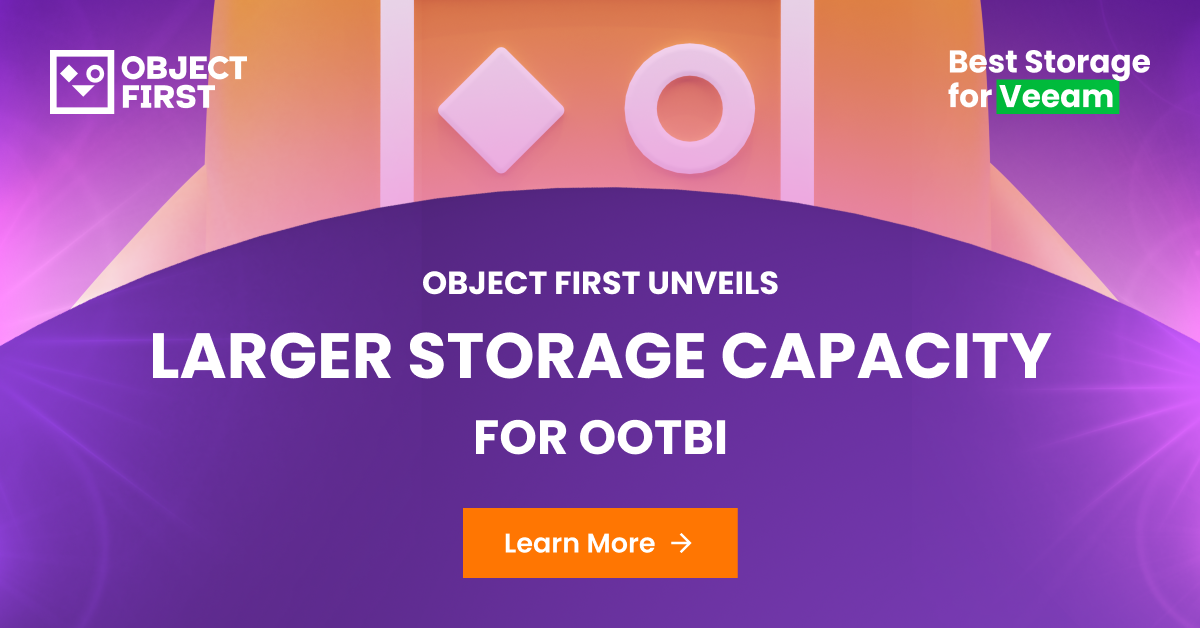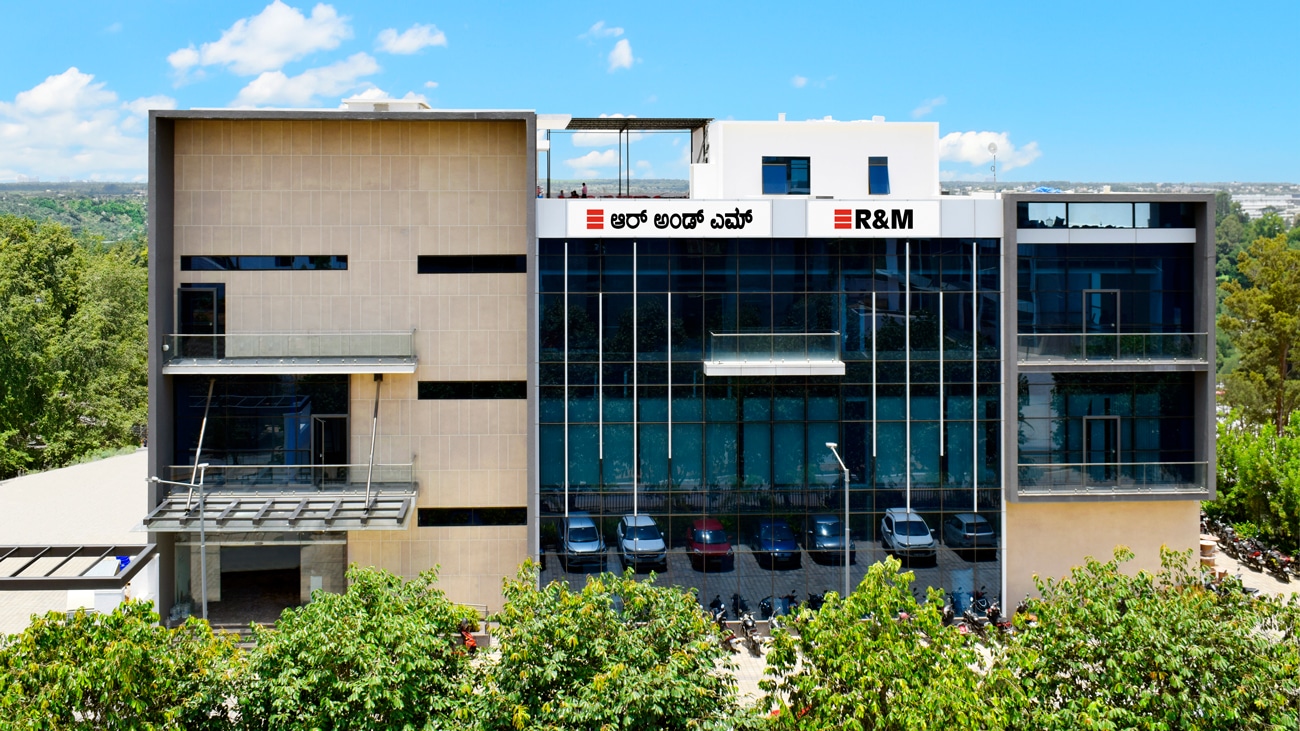Data
Artificial Intelligence in Data Centre Operations
Data
Data Centre Operations: Optimising Infrastructure for Performance and Reliability
News
Scality RING solution deployed at SeqOIA medical lab
Scality, a global provider of cyber-resilient storage for the AI era, today announced a large-scale deployment of its RING distributed file and object storage solution to optimise and accelerate the data lifecycle for high-throughput genomics sequencing laboratory, SeqOIA Médecine Génomique.
This is the most recent in a series of deployments where RING is leveraged as a foundational analytics and AI data lake repository for organisations in healthcare, financial services and travel services across the globe.
Selected as part of the France Médecine Génomique 2025 (French Genomic Medicine Plan), SeqOIA is one of two national laboratories integrating whole genome sequencing into the French healthcare system to benefit patients with rare diseases and cancer.
SeqOIA adopted Scality RING to aggregate petabyte-scale genetics data used to better characterise pathologies, as well as guide genetic counselling and patient treatment. RING grants SeqOIA biologists efficient access from thousands of compute nodes to nearly 10 petabytes of data throughout its lifecycle, spanning from lab data to processed data, at accelerated speeds and a cost three to five times lower than that of all-flash file storage.
“RING is the repository for 90% of our genomics data pipeline, and we see a need for continued growth on it for years to come,” says Alban Lermine, IS and Bioinformatics Director of SeqOIA.
“In collaboration with Scality, we have solved our analytics processing needs through a two-tier storage solution, with all-flash access of temporary hot data sets and long-term persistent storage in RING. We trust RING to protect the petabytes of mission-critical data that enable us to carry out our mission of improving care for patients suffering from cancer and other diseases.”
Scality RING powers AI data lakes for other data-intensive industries. One of the largest publicly held personal line insurance providers in the US chose RING as the preferred AI-data lake repository for insurance analytics claim processing. The provider chose RING to replace its HDFS (Hadoop File System), and the customer has since realised three times improved space efficiency and cost savings, with higher-availability through a multi-site RING deployment to support site failover.
Meanwhile, a multinational IT services company whose technology fuels the global travel and tourism industry is using Scality RING to power its core data lake. RING supports one petabyte of new log data ingested each day to maintain a 14-day rotating data lake. This requires RING to purge (delete) the oldest petabyte each day, while simultaneously supporting tens of gigabytes per second (GB/s) read access for analysis from a cluster of Splunk indexers.
For data lake deployments, these organisations require trusted and proven solutions with a long-term track record of delivering performance and data protection at petabyte-scale. For AI workload processing, they pair RING repositories in an intelligent tiered manner with all-flash file systems, as well as leading AI tools and analytics applications, including Weka.io, HPE Pachyderm, Cribl, Cloudera, Splunk, Elastic, Dremio, Starburst and more.
With strategic partners like HPE and HPE GreenLake, Scality has the ability to deliver managed AI data lakes.
For more from Scality, click here.
Simon Rowley - 11 June 2024
Artificial Intelligence in Data Centre Operations
Data
Data Centre Operations: Optimising Infrastructure for Performance and Reliability
News
Cirata to offer native integration with Databricks Unity Catalog
Cirata, the company that automates Hadoop data transfer and integration to modern cloud analytics and AI platforms, has announced the release of Cirata Data Migrator 2.5 which now includes native integration with the Databricks Unity Catalog.
Expanding the Cirata and Databricks partnership, the new integration centralises data governance and access control capabilities to enable faster data operations and accelerated time-to-business-value for enterprises.
Databricks Unity Catalog delivers a unified governance layer for data and AI within the Databricks Data Intelligence Platform. Using Unity Catalog enables organisations to seamlessly govern their structured and unstructured data, machine learning modules, notebooks, dashboards and files on any cloud or platform.
By integrating with Databricks Unity Catalog, Cirata Data Migrator unlocks the ability to execute analytics jobs as soon as possible or to modernise data in the cloud. With the ability to support Databricks Unity Catalog’s functionality for stronger data operations, access control, accessibility and search, Cirata Data Migrator automates large-scale transfer of data and metadata from existing data lakes to cloud storage and database targets, even while changes are being made by the application at the source.
Using Cirata Data Migrator 2.5, users can now select the Databricks agent and define the use of Unity Catalog with Databricks SQL Warehouse. This helps data science and engineering teams maximise the value of their entire data estate while benefiting from their choice of metadata technology in Databricks.
“As a long-standing partner, Cirata has helped many customers in their legacy Hadoop to Databricks migrations,” said Siva Abbaraju, Go-to-Market Leader, Migrations, Databricks. “Now, the seamless integration of Cirata Data Migrator with Unity Catalog enables enterprises to capitalize on our Data and AI capabilities to drive productivity and accelerate their business value.”
“Cirata is excited by the customer benefits that come from native integration with the Databricks Unity Catalog,” says Paul Scott-Murphy, Chief Technology Officer, Cirata. “By unlocking a critical benefit for our customers, we are furthering the adoption of data analytics, AI and ML and empowering data teams to drive more meaningful data insights and outcomes.”
This expanded Cirata-Databricks partnership builds on previous product integrations between the two companies. In 2021, the companies partnered to automate metadata and data migration capabilities to Databricks and Delta Lake on Databricks, respectively. With data available for immediate use, the integration eliminated the need to construct and maintain data pipelines to transform, filter and adjust data, along with the significant up-front planning and staging.
Cirata Data Migrator is a fully automated solution that automates Hadoop data transfer and integration and moves on-premises HDFS data, Hive metadata, local filesystem, or cloud data sources to any cloud or on-premises environment, even while those datasets are under active change. Cirata Data Migrator requires zero changes to applications or business operations and moves data of any scale without production system downtime, business disruption, and with zero risk of data loss.
Cirata Data Migrator 2.5 is available now with native integration with the Databricks Unity Catalog.
Simon Rowley - 10 June 2024
Data
News
New AI data cycle storage framework introduced
Fuelling the next wave of AI innovation, Western Digital has introduced a six-stage AI Data Cycle framework that defines the optimal storage mix for AI workloads at scale. This framework is designed to help customers plan and develop advanced storage infrastructures to maximise their AI investments, improve efficiency, and reduce the total cost of ownership (TCO) of their AI workflows.
AI models operate in a continuous loop of data consumption and generation - processing text, images, audio and video among other data types while simultaneously producing new unique data. As AI technologies become more advanced, data storage systems must deliver the capacity and performance to support the computational loads and speeds required for large, sophisticated models while managing immense volumes of data.
Western Digital has strategically aligned its Flash and HDD product and technology roadmaps to the storage requirements of each critical stage of the cycle, and has now introduced a new high-performance PCIe Gen5 SSD to support AI training and inference; a high-capacity 64TB SSD for fast AI data lakes; and the world’s highest capacity ePMR, UltraSMR 32TB HDD for cost-effective storage at scale.
“There’s no doubt that Generative AI is the next transformational technology, and storage is a critical enabler,” says Ed Burns, Research Director at IDC. “The implications for storage are expected to be significant as the role of storage, and access to data, influences the speed, efficiency and accuracy of AI Models, especially as larger and higher-quality data sets become more prevalent.
“As a leader in Flash and HDD, Western Digital has an opportunity to benefit in this growing AI landscape with its strong market position and broad portfolio, which meets a variety of needs within the different AI data cycle stages.”
Rob Soderbery, Executive Vice President and General Manager of Western Digital’s Flash Business Unit, adds, “Data is the fuel of AI. As AI technologies become embedded across virtually every industry sector, storage has become an increasingly important and dynamic component of the AI technology stack. The new AI Data Cycle framework will equip our customers to build a storage infrastructure that impacts the performance, scalability, and the deployment of AI applications, underscoring our commitment to deliver unparalleled value to our customers."
The new Ultrastar DC SN861 SSD is Western Digital’s first enterprise-class PCIe Gen 5.0 solution with random read performance and projected best-in-class power efficiency for AI workloads. With capacities up to 16TB, it delivers up to three times random read performance increase versus the previous generation with ultra-low latency and incredible responsiveness for large language model (LLM) training, inferencing and AI service deployment.
In addition, the low power profile delivers higher IOPS/Watt, reducing overall TCO. The increased PCIe Gen5 bandwidth addresses the growing needs of the AI market for high-speed accelerated computing combined with low latency to serve compute-intensive environments of AI. Built for mission-critical workloads, the Ultrastar DC SN861 provides a rich feature set, including NVMe 2.0 and OCP 2.0 support, 1 and 3 DWPD, and a five-year limited warranty. The Ultrastar DC SN861 E1.S is now sampling. The U.2 will begin sampling this month and will begin volume shipments in CQ3’24. More details on E1.S and E3.S form factors will follow later this year.
Complementing the Ultrastar DC SN861, is the expanded Ultrastar DC SN655 enterprise-class SSD range designed for storage-intensive applications. The new options for the U.3 SSD will reach up to 64TB, driving higher performance and capacity for AI data preparation and faster, larger data lakes. These new DC SN655 variants are now sampling. More details about the drives will be released later this year when volume shipments begin.
Western Digital is also now sampling the industry’s highest-capacity, 32TB ePMR enterprise-class HDD to select customers. Designed for massive data storage in hyperscale cloud and enterprise data centres, the new Ultrastar DC HC690 high-capacity UltraSMR HDD will play a vital role in AI workflows where large-scale data storage and low TCO are paramount, the company says. Leveraging proven designs from generations of successful products, the new 32TB drive delivers high capacity with seamless qualification and integration for rapid deployment, while maintaining superior dependability and reliability. More details about the drive will be available later this summer.
“Each stage of the AI Data Cycle is unique with different infrastructure and compute requirements. By understanding the dynamic interplay between AI and data storage, Western Digital is delivering solutions that not only offer higher capacities but are also tailored to support the extreme performance and endurance of next-generation AI workloads,” adds Soderbery. “With our growing portfolio, long-term roadmap and constant innovation, our goal is to help customers unlock the transformative capabilities of AI.”
For more from Western Digital, click here.
Simon Rowley - 7 June 2024
Data
News
Syniti chosen to modernise and integrate IT and data landscape
Syniti, a global leader in enterprise data management, has announced that Caldic, a global distribution solutions provider for the life and material science markets, will use Syniti’s Knowledge Platform (SKP) to help improve its data quality and build a global master data management (MDM) platform for active data governance. This will allow Caldic to work with clean data, now and in the future.
Recently, Caldic expanded significantly following strategic mergers and acquisitions, positioning the organisation as a key industry player with a strong foothold in four regions around the world. With global coverage, the opportunity arose to build a unique, integrated platform in the distribution industry that facilitates the company’s business partners’ digital journey at a global scale. As a result of these strategic investments, Caldic has multiple separate ERPs and IT infrastructures. Syniti will work with Caldic to help optimise data quality and to apply data governance across the globe on the different ERP systems; the company is investing in data quality, harmonisation, and governance in its systems to enhance the efficiency of commercial operations and help make it easier for customers to unlock value when doing business with Caldic.
Furthermore, these efforts will solidify a strong data foundation to enable faster integration of future acquisitions and data migrations, help to improve time to value and to ensure that additional strategic efforts can be more secure, risk-averse, and cost-efficient.
With Syniti, Caldic gains:
· An experienced partner solely focused on data with a proven track record of delivering successful outcomes in data optimisation, data quality management and master data management for the world’s largest organisations.
· A unified end-to-end platform that improves data quality and simplifies enterprise data migrations, data management, governance and analytics capabilities.
· A team of 100% data-focused specialists who bring technical, functional and business expertise to deliver high-quality, business-optimal data in the context of Caldic’s business.
The Syniti Knowledge Platform is an enterprise data management platform that helps organisations overcome complex enterprise data transformation challenges by combining data expertise, intelligent software and packaged solution accelerators. Its software applies automation and guidance informed by AI and machine learning technologies to data migration, data quality, analytics, master data management and more.
Lenno Maris, Chief Data Officer, Caldic, says, “As we advance building our global platform and onboarding new companies into our fold, our business requires fast and smooth incorporation of data and systems in Caldic’s infrastructure. The end-to-end solution from Syniti provides a data first approach that guarantees high-quality data are available to help us drive our operations more effectively and efficiently in the future.”
Kevin Campbell, CEO, Syniti, says, “When getting it right the first time matters, you need expert help. We offer both the technology and expertise Caldic needs to support their data journey. Caldic is regional- and supply chain-driven – everything that has to do with supply chain, inventory, transportation and material handling – so finding optimisation is key in terms of in-time delivery, product, storage and cost. With the right data in the right places, Caldic is well-positioned to continue on its growth journey.”
Carly Weller - 6 June 2024
Data
News
Object First unveils larger storage capacity for Ootbi
Object First, the provider of the ransomware-proof backup storage appliance purpose-built for Veeam, today announced increased storage capacity up to 192TB on a single Ootbi node that unlocks up to 768TB of usable immutable backup storage per cluster.
The latest release allows customers to manage storage capacity more efficiently and back up data more securely without sacrificing performance. The 192TB version of Ootbi joins the existing 64TB and 128TB appliances, all of which are interoperable.
“This announcement reinforces Object First's commitment to innovation and meeting customers' need for secure, adaptable storage capacity,” says Eric Schott, Chief Product Officer, Object First. “Support for more immutable storage allows customers to scale with the growing demands of modern environments while protecting data against the risks of threats like ransomware. The continuous integration with Veeam's 12.1.2 release allows for even greater backup storage capacities beyond 3PB as part of a Veeam backup repository.”
The ever-expanding quantity of private and commercial data is plagued by security threats. This means organisations need larger, more secure backup storage targets to accommodate larger workloads and infrastructures. Ootbi satisfies today’s need for flexible sizing by allowing organisations to expand their lab easily with a larger footprint, while maintaining the highest standards for security and ransomware resilience with additional tamper-proofing and security hardening.
Key new capabilities of Ootbi’s 1.5 release and 192TB appliance include:
• Size: Ootbi now supports up to 192TB on a single node, unlocking up to 768TB of usable immutable backup storage per cluster.• Scale: Continuous integration with Veeam's 12.1.2 release enables greater backup storage capacities beyond 3PB as Ootbi clusters can now be used as multiple extents in a Veeam scale-out backup repository (SOBR).• Security: Continuous third-party security testing and validation of Ootbi 1.5 further improves Object First’s out-of-the-box hardening, including additional support for network time security (NTS) time service options and named admins.
“Ootbi’s 192TB appliance and the 1.5 release advance our mission to provide secure, simple, and powerful on-premises backup storage that is tailored for the specific needs of Veeam customers,” notes David Bennett, CEO, Object First. “We’re able to offer three different storage capacity sizes without compromising configuration, performance, or security, giving customers the best storage for Veeam.”
Johnny Yu, Research Manager at IDC, adds, "Immutable, impenetrable backup storage remains a crucial component to cyber resilience, as IDC research found that criminals attempted to destroy their targets' backup and recovery capabilities in roughly half of occurrences. Ootbi's third party-validated security measures and 'no delete button' directly address this line of attack."
Ootbi version 1.5 is generally available today, while general availability of the Ootbi 192TB appliance is expected worldwide in August 2024.
VeeamON 2024 attendees can get a first look at the latest Ootbi features from Object First at booth G2.
For more from Object First, click here.
Simon Rowley - 3 June 2024
Artificial Intelligence in Data Centre Operations
Data
Data Centre Operations: Optimising Infrastructure for Performance and Reliability
Data Centres
News
Arista announces technology demonstration of AI data centres
Arista Networks has announced a technology demonstration of AI data centres in order to align compute and network domains as a single managed AI entity, in collaboration with NVIDIA.
In order to build optimal generative AI networks with lower job completion times, customers can configure, manage, and monitor AI clusters uniformly across key building blocks including networks, NICs, and servers. This demonstrates the first step in achieving a multi-vendor, interoperable ecosystem that enables control and coordination between AI networking and AI compute infrastructure.
As the size of AI clusters and large language models (LLMs) grows, the complexity and sheer volume of disparate parts of the puzzle grow apace. GPUs, NICs, switches, optics, and cables must all work together to form a holistic network. Customers need uniform controls between their AI servers hosting NICs and GPUs, and the AI network switches at different tiers. All these elements are reliant upon each other for proper AI job completion but operate independently.
This could lead to misconfiguration or misalignment between aspects of the overall ecosystem, such as between NICs and the switch network, which can dramatically impact job completion time, since network issues can be very difficult to diagnose. Large AI clusters also require coordinated congestion management to avoid packet drops and under-utilisation of GPUs, as well as coordinated management and monitoring to optimise compute and network resources in tandem.
At the heart of this solution is an Arista EOS-based agent enabling the network and the host to communicate with each other and coordinate configurations to optimise AI clusters. Using a remote AI agent, EOS running on Arista switches can be extended to directly-attached NICs and servers to allow a single point of control and visibility across an AI data centre as a holistic solution.
This remote AI agent, hosted directly on an NVIDIA BlueField-3 SuperNIC or running on the server and collecting telemetry from the SuperNIC, allows EOS, on the network switch, to configure, monitor, and debug network problems on the server, ensuring end-to-end network configuration and QoS consistency. AI clusters can now be managed and optimised as a single homogenous solution.
John McCool, Chief Platform Officer for Arista Networks, comments, “Arista aims to improve efficiency of communication between the discovered network and GPU topology to improve job completion times through coordinated orchestration, configuration, validation, and monitoring of NVIDIA accelerated compute, NVIDIA SuperNICs, and Arista network infrastructure.”
This new technology demonstration highlights how an Arista EOS-based remote AI agent allows the combined, interdependent AI cluster to be managed as a single solution. EOS running in the network can now be extended to servers or SuperNICs via remote AI agents to enable instantaneous tracking and reporting of performance degradation or failures between hosts and networks, so they can be rapidly isolated and the impact minimised.
Since EOS-based network switches are constantly aware of accurate network topology, extending EOS down to SuperNICs and servers with the remote AI agent further enables coordinated optimisation of end-to-end QoS between all elements in the AI data centre to reduce job completion time.
Zeus Kerravala, Principal Analyst at ZK Research, adds, “Best-of-breed Arista networking platforms with NVIDIA’s compute platforms and SuperNICs enable coordinated AI data centres. The new ability to extend Arista’s EOS operating system with remote AI agents on hosts promises to solve a critical customer problem of AI clusters at scale, by delivering a single point of control and visibility to manage AI availability and performance as a holistic solution.”
Arista will demonstrate the AI agent technology at the Arista IPO tenth anniversary celebration in NYSE on 5 June, with customer trials expected in the second half of 2024.
For more from Arista, click here.
Simon Rowley - 29 May 2024
Data
Data Centre Business News and Industry Trends
Data Centre Security: Protecting Infrastructure from Physical and Cyber Threats
Data Centre Training & Certification Programs
News
Veeam launches cyber resilience education programmes
Veeam Software, a provider of data protection and ransomware recovery products, has announced that new technical training and certification programmes are available through Veeam University, a service which delivers Veeam technical training to IT professionals on-demand anytime, anywhere.
The new online offering is the result of a global partnership with Tsunati, a Veeam-accredited service partner, which is helping to provide on-demand, technical certification training for partners and customers worldwide.
Veeam University says that it offers maximum flexibility and an immersive, engaging learning experience in a self-paced format. Its approach includes clickable labs that can be accessed 24/7, video-based demos, and technical deep dives which allow students to effectively absorb concepts and prepare for real-world cybersecurity and disaster recovery scenarios. Completion of on-demand courses offered through Veeam University qualify learners for Veeam certification exams, including Veeam Certified Engineer (VMCE).
“Knowledge is critical in a world where every organisation is facing cyberthreats,” explains Mike Blanchette, Vice President, Global Sales Acceleration at Veeam. “Cyber resilience is the marriage of the right technology to protect and recover your systems and data should the worst happen, with the skills and knowledge to configure, build, and run that technology safely.
“Through these new investments in Veeam University, we are preparing people to tackle any cybersecurity challenge they face and enabling cyber resiliency. Our partnership with Tsunati enables us to provide innovative technical training and certification programmes in a flexible format that best suits the learner."
Tsunati is a professional services and integration company specialising in data protection, Cloud computing, and multi-tenant virtualisation. Recognised as Veeam Accredited Service Partner of the Year for 2022, Veeam believes that Tsunati has changed the world of product training, education and certification. Through its proprietary Solution Education Enablement (SEETM) framework, customers receive practical training and the critical knowledge transfer required to effectively implement and maintain cutting-edge data protection solutions powered by Veeam.
"We are thrilled to join forces with Veeam in revolutionising technical certification training for data protection," says Stoney Hall, CEO of Tsunati. "This partnership represents a synergy of our expertise in Solution Enablement Education (SEETM) and Veeam’s industry-leading data protection and ransomware recovery solutions. Together, we aim to empower professionals with the knowledge and skills required to navigate the evolving landscape of data security effectively."
New technical professional training for Veeam partners is available through the Veeam ProPartner portal, while newly updated customer technical education and certification programmes are available separately through Veeam Technical Education Services.
More details on Veeam University can be found at veeamuniversity.com.
For more from Veeam, click here.
Simon Rowley - 29 May 2024
Data
News
R&M opens new fibre optic plant in India
R&M, a globally active Swiss developer and provider of high-end infrastructure solutions for data and communications networks, has opened a new fibre optic plant in India.
Opened in mid-May, the entire infrastructure was relocated to Bagaluru, in the north of Bangalore. Investments were also made in new production lines and production capacity was further increased. Bagaluru is now R&M’s largest site worldwide for the manufacture of fibre optic cabling components.
Laurent Amestoy, Executive Vice President R&M APAC, explains, "Demand for fibre optic connectivity solutions from R&M is increasing in India, and Asia in general. The driving forces are broadband supply, 5G and data centres. That’s why we’re building up additional manufacturing capacities here. The fibre optic plant plays a key role in our regional growth strategy and strengthens our position as a top-quality vendor of connectivity infrastructure solutions."
Michel Riva, R&M's CEO, adds, "With this investment, we are reaffirming R&M’s commitment to a long-term involvement in the growth market of India. The new plant will also assume a global function. As the largest production site, it provides flexible and responsive resources for our supply chain. This makes us more competitive and also ready for a new upswing in western markets."
R&M has had its own production facilities in India since 2014. Initially, the focus was on assembling fibre optic patch cords for the global market. In 2018, R&M opened a plant with 200 workplaces in Jakkur near Bangalore. Demand on site increased rapidly with the broadband rollout and rapid data centre growth. Today, R&M supplies India’s entire telecom industry, as well as metro and smart city projects with a comprehensive fibre optic portfolio. In addition to infrastructure solutions for FTTx networks, R&M India also offers the development of dedicated cabling solutions for enterprises and data centres. Since 2023, R&M has been very successful with fibre optic connectivity solutions for the base stations of the new 5G networks in India.
Discussing the new fibre optic plant, Markus Stieger, COO of R&M, comments, "Bagaluru provides the ideal premises in the dynamic industrial agglomeration of Bangalore. The plant is located just 10km from the international airport. Spread over three floors, the new building offers flexible expansion options and 400-500 modern workplaces. Our production operation works in accordance with the high Swiss quality standards that R&M represents worldwide. Due to demand, we are already planning two- and three-shift operation."
R&M India promotes sustainability in several ESG areas. The plant in India is certified in accordance with international standards for occupational safety, quality and environmental management. Employees present their questions and statements to managers in regular open-door meetings. One example of how the volume of waste is being reduced is that the use of disposable plastic bottles has been discontinued. Regular local charity initiatives are also part of the commitment, such as providing children with school bags and textbooks so that they can take part in lessons. Furthermore, a long-term afforestation project in Errabadu is helping to provide livelihoods for Indian farmers and contributing to CO2 compensation.
For more from R&M, click here.
Simon Rowley - 28 May 2024
Data
Data Centre Operations: Optimising Infrastructure for Performance and Reliability
Data Centre Security: Protecting Infrastructure from Physical and Cyber Threats
How the Internet of Things Is Shaping Data Centre Operations
News
DigiCert unveils Device Trust Manager for IoT security
DigiCert, a global provider of digital trust products, has announced the evolution of its IoT security platform with the launch of DigiCert Device Trust Manager, an innovation designed to safeguard IoT devices throughout the entire lifecycle.
The new Device Trust Manager addresses the critical needs of device manufacturers for an integrated and scalable solution to secure IoT devices, manage complex compliance requirements, and ensure operational and device integrity amidst growing threats targeting devices.
With the projected growth of 55.7 billion connected devices by the year 2025 - spanning consumer electronics, healthcare equipment, industrial systems, and more - the threat landscape grows more diverse and complex each day. The scale of this interconnected ecosystem also amplifies compliance issues, as organisations struggle to adhere to stringent security standards and regulations across diverse device types, environments, and borders. To effectively mitigate these risks, organisations need a comprehensive way to manage and secure the vast array of devices in various stages of the lifecycle while safeguarding data, privacy, and operational continuity in the face of evolving threats.
“With Device Trust Manager, DigiCert is reinforcing its commitment to digital trust in the rapidly expanding IoT landscape,” says Deepika Chauhan, Chief Product Officer, DigiCert. “We're excited to introduce this integrated platform to new and existing customers, transforming IoT device security with comprehensive protection throughout the device lifecycle. Device Trust Manager checks all the IoT boxes, except the one labelled 'Ship and Pray'.”
DigiCert Device Trust Manager offers unparalleled security for every stage of the IoT device lifecycle, from birth to decommission, ensuring compliance while improving operational efficiency. The solution prioritises privacy, consumer safety, and business continuity via:
• Enhanced compliance: Simplifies adherence to international regulations, supporting rigorous compliance demands with detailed SBOMs (Software Bill of Materials), real-time monitoring, and secure provisioning to maintain device integrity throughout the lifecycle• Operational efficiency: Automates security processes, enabling quicker device deployment with features like over-the-air (OTA) updates and zero-touch provisioning• Risk mitigation: Improves anomaly detection capabilities to protect against downtime and data breaches• Scalable security: Easily scales from small to large deployments, adapting to various device ecosystems.
“The latest solution from DigiCert, built upon the already impressive DigiCert One platform, shows continued innovation,” says Sam Gabbay, President, TUO Accessories. “Once again, DigiCert is leading the way by showing leadership, commitment to IoT security and especially their customer experience by thinking 10 steps ahead for them. I am proud to be a DigiCert customer and am excited to use Device Trust Manager, which shows promise to improve an already streamlined workflow.”
For more from DigiCert, click here.
Simon Rowley - 23 May 2024
Data
Data Centre Build News & Insights
Data Centre Operations: Optimising Infrastructure for Performance and Reliability
Data Centre Projects: Infrastructure Builds, Innovations & Updates
How the Internet of Things Is Shaping Data Centre Operations
News
Schneider Electric helps Sidara build a greener future
Schneider Electric, a leader in the digital transformation of energy management and automation, has revealed that its smart energy management solutions feature in the London headquarters of leading design, engineering, and consulting group, Sidara.
Designed by Sidara’s own engineers, 150 Holborn has been created with sustainability and user efficiency at its core. Embedded with innovative smart building technology, the new headquarters will play a key role in supporting Sidara’s ambition to decarbonise its business by 2030, under the World Green Building Council’s Net Zero Carbon Buildings Commitment.
The building, which officially opened its doors in January 2023, is over 180,000 square feet and caters for over 1,000 employees. It is built on Schneider Electric’s EcoStruxure IoT platform and uses a sophisticated network of over 650 sensors and controls to collect, analyse, and manage over 60,000 data points. These provide vital information into energy usage, occupancy patterns, and environmental conditions, such as temperature, humidity, and light intensity, in near real time.
The data and insights from the platform allow Sidara to tailor the environmental conditions within office spaces and meet the specific needs and preferences of occupants. Whether it’s adjusting lighting levels, modifying temperatures or boosting air quality, the system ensures that workspaces are not just habitable but are optimised to promote well-being and productivity. It is also helping the company to reduce energy waste and deliver on the wider sustainability initiatives.
“Access to Schneider Electric’s expertise and experience has been vital to understanding how our building’s technology and systems must be designed to enable continuous optimisation and innovation,” says Dan Cope, IT manager at Sidara. “Our vision is to create a best-in-class working environment to optimise energy consumption and enhance comfort levels for both employees and visitors. However, this is just the beginning. Becoming more sustainable is a journey and ongoing engagement with the Schneider Electric team will be key to understanding the building and benchmarking ourselves moving forward.”
Kas Mohammed, VP Digital Energy at Schneider Electric UK & Ireland, notes, “With 150 Holborn, Sidara has created a building of the future, today. Every aspect of its smart infrastructure has been meticulously planned and executed to help the company on its journey to net-zero. This new headquarters stands as a beacon of best-practice and Sidara’s efforts to build sustainability into its very foundation is something that others can – and should – look to emulate.”
For more from Schneider Electric, click here.
Simon Rowley - 22 May 2024

Head office & Accounts:
Suite 14, 6-8 Revenge Road, Lordswood
Kent ME5 8UD
T: +44 (0)1634 673163
F: +44 (0)1634 673173









